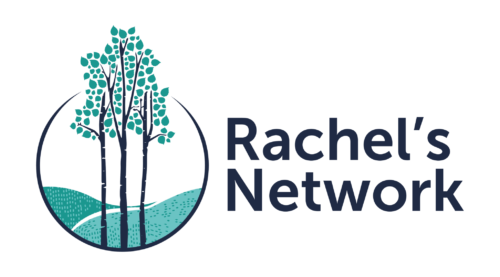Trish Silber, president of Aliniad Consulting Partners, shared core trends in board leadership and organizational change management with members of Rachel’s Network. She introduced her tiered board leadership framework that recognizes the multiple responsibilities of nonprofit boards, and the range of ways directors think about their role. Here, Trish shares her thoughts about leadership for nonprofit board members.
What do you think is the most important quality to being an effective leader?
There are a lot of great answers to this question (integrity, trustworthiness, etc.). A classic definition of leadership that I adhere to is: Leadership is any attempt to influence another person’s behavior. With that definition, one of the most important qualities to bring as a leader is the ability to connect. To effectively influence others, you need to connect in three ways*:
- To yourself: This is about being authentic, being profoundly true to yourself and comfortable in your own skin. It’s about knowing what you care about most, what you want to achieve, what/who you want to influence or impact. Authentic leaders attract followers.
- To others: This is about being engaged, about giving undivided attention to those you want to attract, influence and lead. It’s more about being interested in others, rather than being interesting to. By connecting with others, you learn what they need to follow your lead.
- To the “right here, right now”: This is about being present, relaxed and alert (centered) in the moment, fully available to yourself and others and able to take any action needed to achieve your goal. Everything you do, say, don’t do, or don’t say is an act of leadership. Every act of leadership happens, not in the past or future, but in the “right here, right now.”
Building your capacity to be authentic, engaged, and present builds your capacity to connect and lead in any moment.
How can individual board directors develop their leadership?
The most extraordinary leaders I know are lifelong and transparent learners. They are the first people in a conversation to ask a question. They exude curiosity, they don’t need to be the smartest person in the room, and they are constantly trying things that are a little scary.
Thinking about the ability to connect (being authentic, engaged, present), here are some relevant skills to consider developing:
- For authenticity: Strengthen your self-awareness and habit of self-reflection. Explore and develop clarity about: your passion, values and goals; your strengths and weaknesses; and, your boundaries. Develop appreciation and compassion for yourself, as well as the abilities to be straight with yourself and hold yourself accountable.
- For engagement: Foster curiosity. Strengthen your skills in listening, communication, collaboration, and conflict management.
- For being present: Develop skills/practices (such as meditation) to strengthen your ability to be mentally focused and manage your emotions, regardless of what’s going on in the moment. Address any issues you have with stress or overload.
You’ve worked with many nonprofits. What sets the successful ones apart when it comes to managing organizational change?
I know a lot of organizations with powerful missions and visions. I know a lot of organizations that are impeccable at execution. I know a lot of organizations that have attracted impressive talent on their boards or staff. However, the organizations that are most successful at powerful organizational change are those organizations that are courageous enough to be brutally honest with themselves about the realities of their field, their organization and/or their programs. The organizations that really talk about sacred cows, the un-discussable forces and politics in their field, or paradigms that have gone stale are the organizations that free up and ignite innovation and sustained energy for change.
These organizations get to the heart of their current state and fuel real change by being inclusive. They know that there are many sticky or hidden realities that the frontline of the organization, or those on the edges, see more clearly than leaders can from their vantage point. And when it comes to changing the future, organizational literature is full of stories of brilliant strategies seeded by cross-organization conversations or the quiet employee. Transformation has to happen at the systems level and the individual level to generate successful change. Paying close attention to the experiences, needs, hopes and collective intelligence of individuals in their organizations brings the priceless return on investment of irrepressible progress.
How do excellent boards support organizations through change?
Excellent boards deliver in times of change. I see too many organizations spending exorbitant amounts of time that they don’t have preparing things for the board while getting minimal support in return. I often ask boards what they are willing to be accountable for delivering to ensure that the organization’s change is successful. And while I think there are a range of ways that excellent boards support organizations through change, three ways stand out:
Bring rigor: Be a thinking partner for the organization’s leaders as they move through change. Help them address questions such as:
What’s emerging, but hasn’t taken shape yet, that we will need to consider as we make plans for the future?
What downsides and/or unintended consequences might we create if we move in a particular direction and how will we manage them?
What must we be willing to stop doing so that we can achieve a more powerful future?
Bring confidence: It’s extremely hard for an organization to successfully change when the board is risk averse or wavering in its support. Can the organization’s leaders stop running a favorite program or make a bold move and trust you’ll back them?
Bring resources: Use your networks to ensure that the organization has the help it needs to move through the change. What resources, talent, or relationships are needed? What doors can you open?
What woman leader or role model had an influence on your work or inspired you?
Happily, this question is difficult for me to answer because I grew up in a family full of incredible women and I’ve had the opportunity to work with many amazing women leaders. One person who comes to mind is a mentor I’ve had. If you saw a picture of her, you’d see a pint-sized (less than five foot tall) person. However, when you are in the room with her, you are with a force. She embodies her vision with verve and invites whoever she’s with to come out of their caves and embody what they believe in, too. It’s impossible to play small when you are with her. So I wonder how we can do more of this with each other? How can we make it unthinkable to play small?
*This material is from Trish’s Awakened Leadership Presence(TM) model ©2013-2015 Aliniad Consulting Partners, Inc. All rights reserved.
Trish Silber, president of Aliniad Consulting Partners, has more than 30 years of experience in organizational and leadership development, executive coaching, and conflict management. She recently completed her second term as the Chair of the Nominating Committee for the National Environmental Education Foundation board and provides pro bono executive coaching for TED Fellows.




This is great advice – well worth reading and remembering!